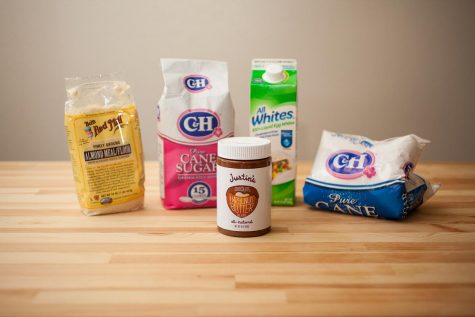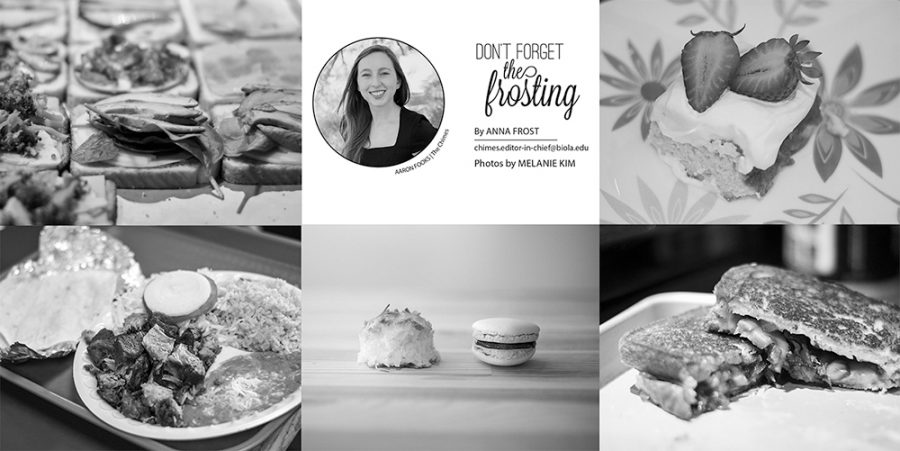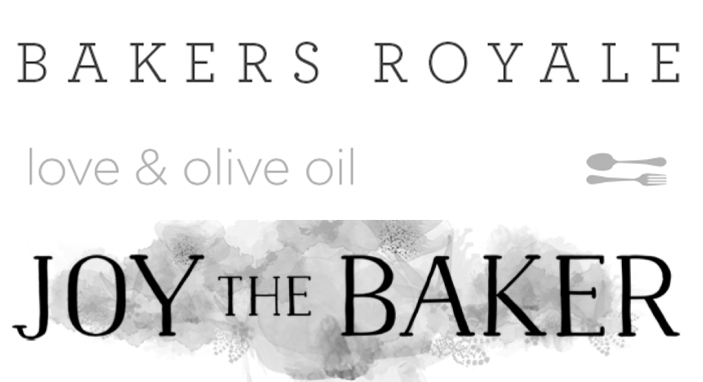Throughout middle and high school, teachers and administrators always confused a girl named Hannah Frost with me.
It started in sixth grade when my science teacher gave me Hannah’s make-up test from another class. It continued in seventh and eighth grades when our biology teacher switched our posted class grades by accident and when a guidance counsellor pulled me aside to talk about a family issue that Hannah’s aunt had called in about.
It never seemed to end, and though comical at first, it became an inconvenience. This frequent mix-up didn’t happen because we looked alike — she had mocha skin and sleek black hair, while my English and Irish heritage has left me fair and freckled — or because we had the same classes — I believe we only had seventh grade biology together. We didn’t hang out with the same people or join the same clubs.
We were merely confused for one another because of a difference in one letter. Her name had an “h” — well two, actually — but they looked and sounded similar enough.
If you’re wondering at this point how this could have anything to do with food, or in this case, cookies, it happens to coincide perfectly with this week’s topic.
These wonderful cookies have had their fill of people mistaking one for the other. Not because they look alike — macaroons are tousled haystacks of golden brown coconut while macarons are delicate cookies created with precision — but because of one letter.
This troublesome little “o” causes confusion when people mean to ask for a macaron but say “macaroon” instead. In America, “macaroon” is often used interchangeably to mean the coconut tumbleweeds and the Parisian sandwich cookies, much to the chagrin of the European chefs at the culinary school I attended.
One particular chef who oversaw my last kitchen class before graduation emphasized the correct pronunciation to my class on the first day as he introduced my task for the next four weeks — the Parisian macaron, pronounced “mack-a-rone.” Think “macaroni” without the “i.” At a basic level, pronouncing a single “o” as a double “o” seems counterintuitive, especially since the French language would use a “ou” to achieve the English “oo” sound.
It is time that everyone gets on the same page and asks for the cookie they mean. Poor homely coconut macaroons are tired of getting dragged out of the pastry case only to discover someone really wanted their prissy Parisian classmate. Let’s give them a break, unless of course you actually mean to eat them.
Coconut macaroons
3 cups sweetened, shredded coconut
4 egg whites, or 3/4 cups egg whites
1/2 cup granulated sugar
1 teaspoon vanilla extract
1/4 teaspoon salt

Preheat oven to 350 F. Lightly grease a cookie sheet with oil or line with parchment paper.
Combine the sugar, egg whites, vanilla and salt in a medium metal mixing bowl. Whisk until the whites are frothy and slightly thickened. Mix in the coconut until it is evenly distributed and moist.

Using a spoon or a cookie scoop to shape rounded mounds of the coconut mixture and place each scoop on the cookie sheet. You can make these macaroons any size.
Bake 15-20 minutes for small macaroons, or 25-30 minutes for larger macaroons. When finished, the coconut will be toasted to a golden brown color.

Allow the cookies to cool for at least 5-10 minutes, or until they are cool enough to handle. When the cookies are hot, they will fall apart easier when moved.
Enjoy warm, cooled, or even dipped in chocolate.
Chocolate-hazelnut Parisian macarons
The difficulty with macarons lies with the many ways that one ruin them with one false move. Even worse, factors out of one’s control such as high humidity or an unreliable oven can wreck havoc. Basically macarons are more high maintenance than souffles.
Each step must be done just so and does require equipment like a food processor and an electric or stand mixer, as well as piping tips, a candy thermometer and a very flat sheet pan. I also recommend using an oven that has a convection setting, as conventional ovens do not bake as evenly. However, if you are seeking a challenge that may require a few tries, this is the recipe for you. Just have patience. And don’t call them macaroons.
The recipe is by weight instead of volume because it is a more exact way of measuring ingredients, especially ones that can pack and settle like almond flour and powder sugar.

88 grams, or 3 1/8 ounces, egg whites
250 grams, or 8 7/8 ounces, almond flour
250 grams, or 8 7/8 ounces, powdered sugar
90 grams, or 3 1/8 ounces, egg whites
230 grams, or 8 1/8 ounces, granulated sugar
100 grams, or 3 1/2 ounces, water
Chocolate hazelnut butter, like Nutella or a natural brand such as Justin’s
Whisk together the almond flour and powdered sugar. Pour half into a food processor and grind to a fine texture for five minutes, stopping about every minute to scrape the sides and bottom of the bowl. Pour into a separate bowl. Repeat with the other half of the almond flour and powdered sugar mixture.

Use a fine mesh sifter to sift the almond flour and powdered sugar to break up clumps and ensure a light, fine texture. Pour the sifted mixture into a mixing bowl and add the 88 grams of egg whites. Mix on medium speed until completely combined.
In a separate mixing bowl, place the 90 grams egg whites and turn the mixer on low speed.
In a small saucepan, add the granulated sugar and water. Stir gently and wipe down the sides to remove all sugar crystals. Cook over high heat with a candy thermometer in the pan to monitor the temperature. Do not stir. When the sugar reaches 230 F, turn the mixer with the egg whites on high speed.
Remove the sugar from the heat at 240 F and wait until the egg whites are whipped so as to hold the shapes of marks the whip leaves as it is mixing. With the mixer still on high speed, slowly pour the hot sugar down the side of the bowl so it goes into the whites without hitting the whip. Let the meringue continue mixing until the bottom of the bowl is no longer heated.
Preheat the oven to 305 F, if using an oven on the convection setting, or 325 F for a conventional oven.
Use completely flat cookie sheets, since any uneven spots will give the macarons an uneven shape. Cut out a piece of parchment paper to the shape of the cookie sheet. You must use parchment paper or else the macarons will stick to the metal cookie sheet. On one side of the parchment paper, trace circles the size that you wish your macarons to be with a sharpie, leaving an inch or two of space in between each circle. Place on the cookie sheet so the sharpie side is down.
Take the meringue off the mixer and place about a third of it into the bowl with the almond flour and egg mixture. Mix with a rubber spatula — not an electric mixer — until completely combined to lighten up the heavy flour mixture. Fold in the rest of the meringue completely, then stir vigorously until the mixture flows evenly off the spatula when lifted up. It should not be runny or thin, it will still be thick and hold its shape, but it should be viscous enough to flow off the spatula.
Place the mixture into a large piping bag with a medium size metal piping tip, such as a size 805. Only fill the piping bag about half way to leave room to hold the bag without spilling. If there is batter still left in the bowl, cover it with a damp paper towel directly on the batter to prevent drying.
Pipe the batter into the circles drawn on the parchment paper, without exceeding the lines. The piped batter should settle into itself, creating a smooth top and spreading slightly.
Let the piped macarons sit out for about 15 minutes. To test if they are ready to bake, gently touch the tops of the cookies. They should not be sticky, but instead a dry, slightly rough surface that you can gently pet. When the cookies are dried properly, place into the oven for 12 minutes. Only if using a conventional oven, rotate the pan 180 degrees after the first six minutes.
When the 12 minutes are up, open the oven door slightly to let the air out, but do not turn off the oven or remove the cookies. Let the macarons sit in the oven for another 3-4 minutes. If your convection oven has a “vent” option, use instead of opening the door.
Take out the macarons and let cool. If the macarons collapse, you may need to bake longer in your oven. If they are crisp and turning a light brown color, you may need to bake for a shorter time. Baking macarons changes from oven to oven, from climate to climate, so some trial and error is involved. I usually bake a test batch of only six or eight cookies when using a different oven until I figure out the right adjustments.
When the cookies are cool, use a piping bag or a knife to place a small dollop of the chocolate hazelnut butter on one cookie, and then place a second on top to create a sandwich. The unfilled macarons can be stored in the freezer until ready to use. Place the filled macarons in the refrigerator overnight and serve the next day. This allows the filling to soften the bottoms of the cookies, bringing greater unity to the macaron and preventing the filling from squishing out when you take a bite.










